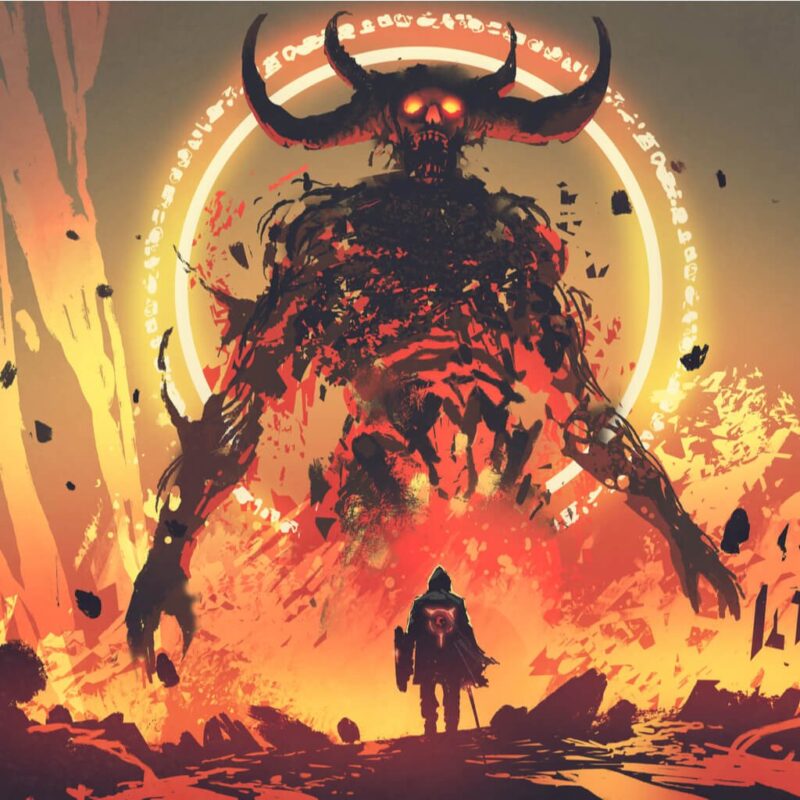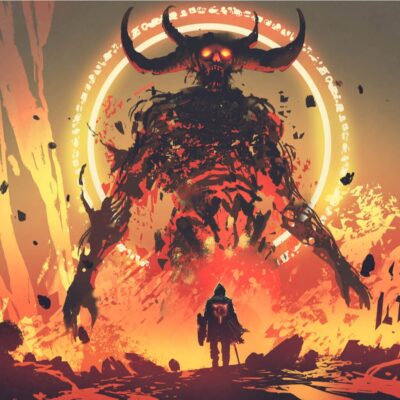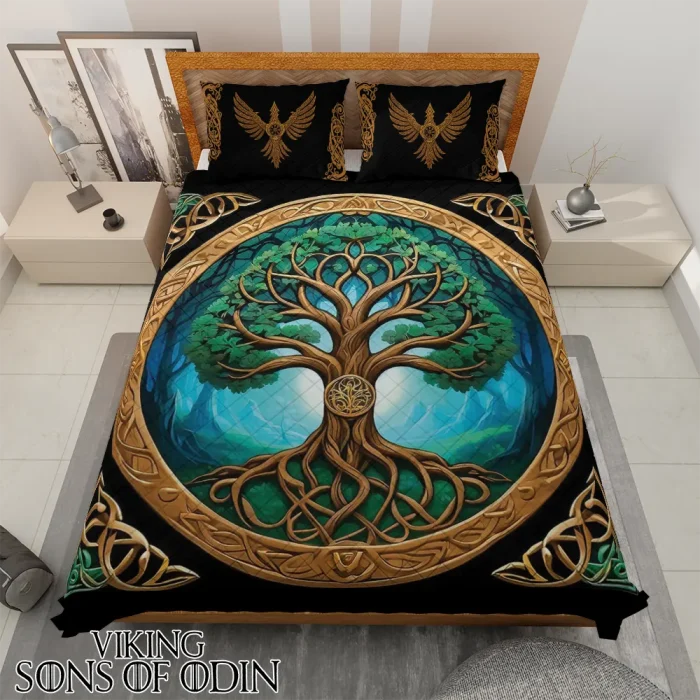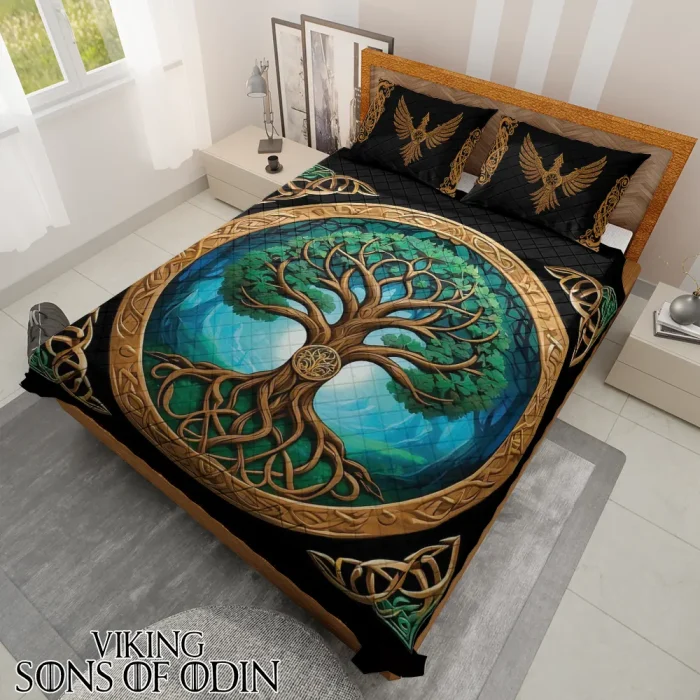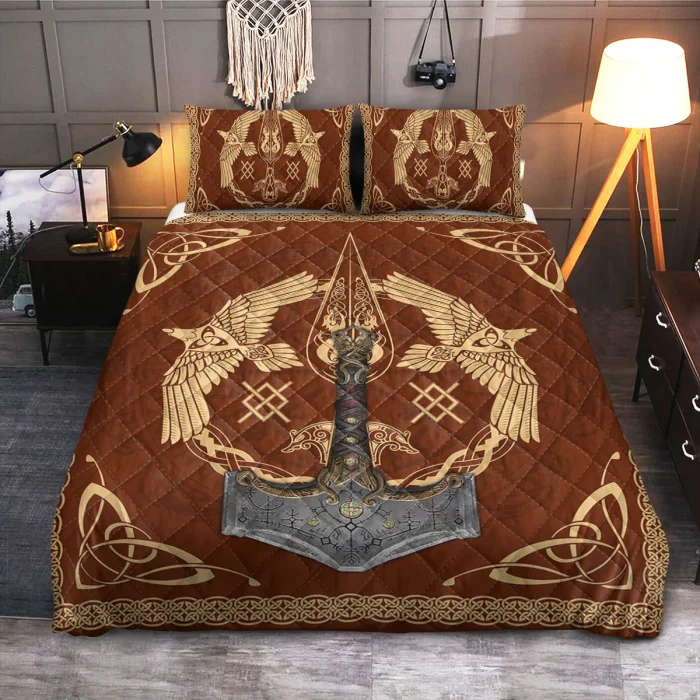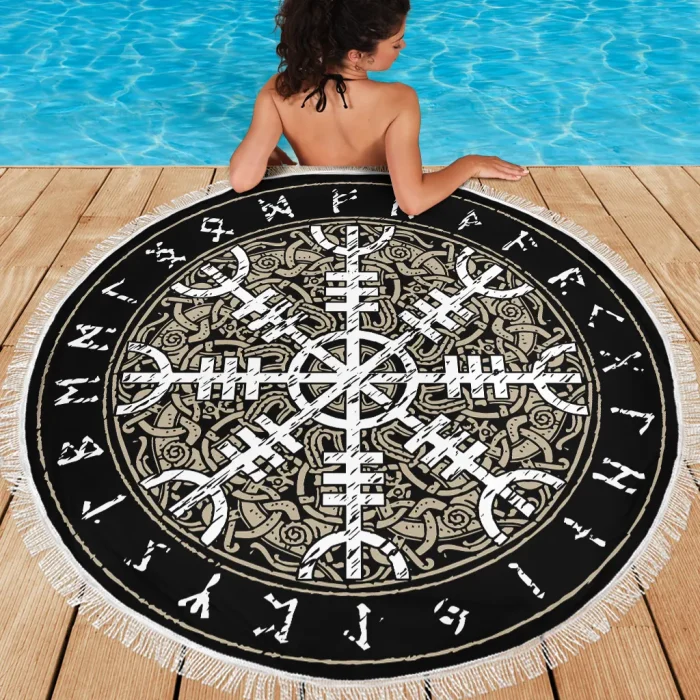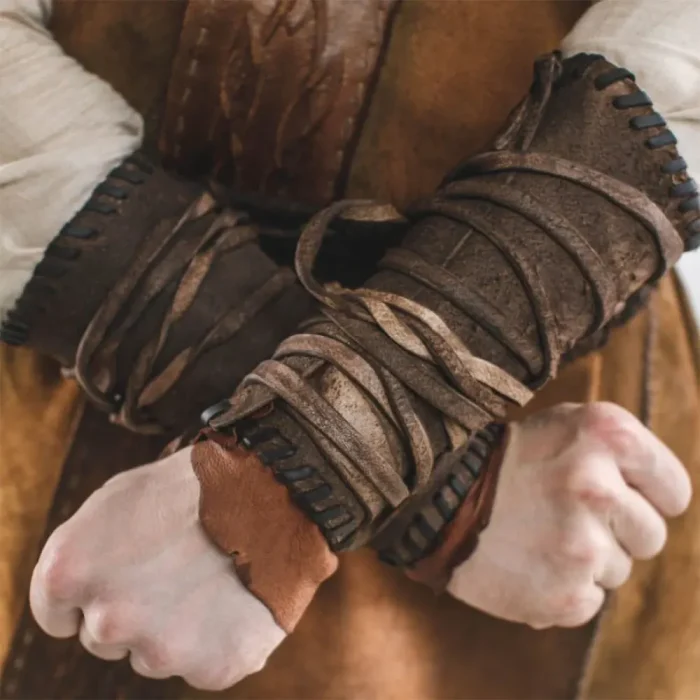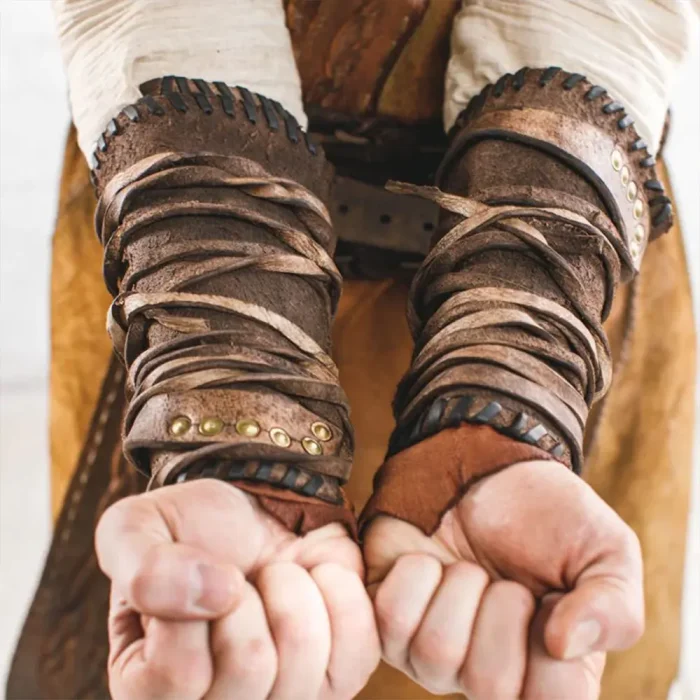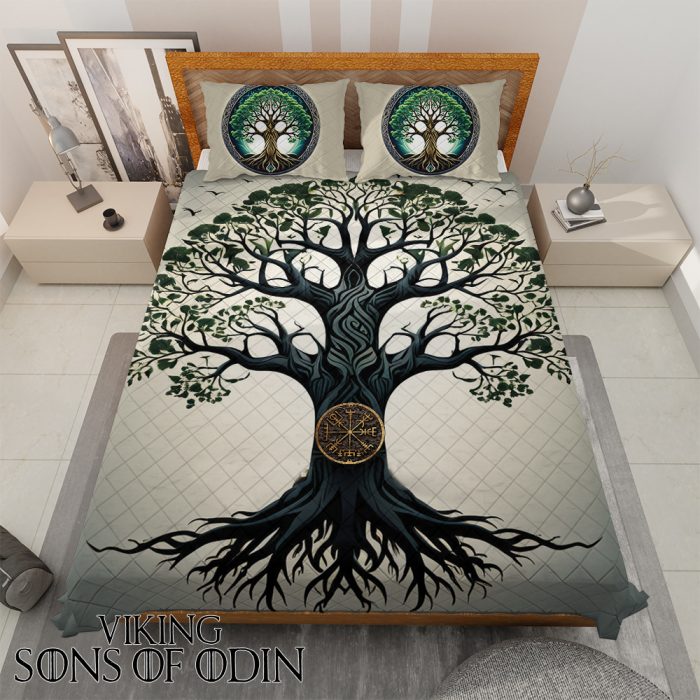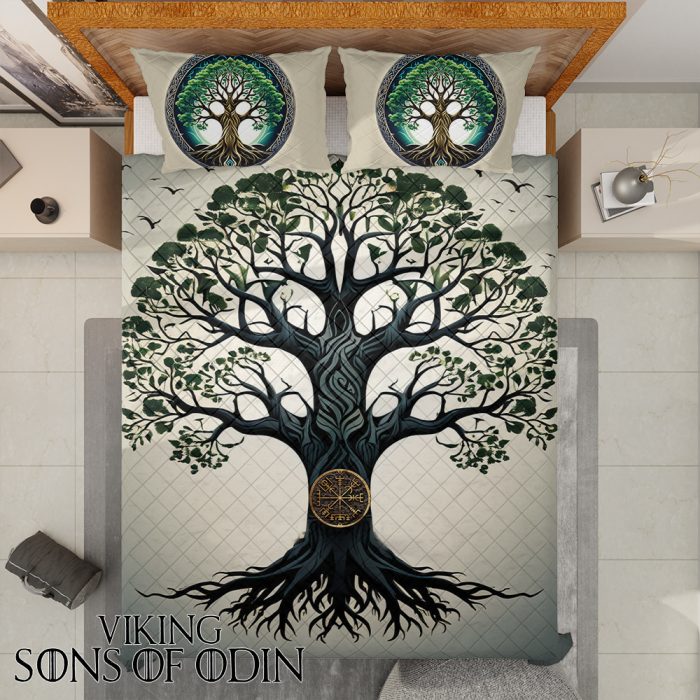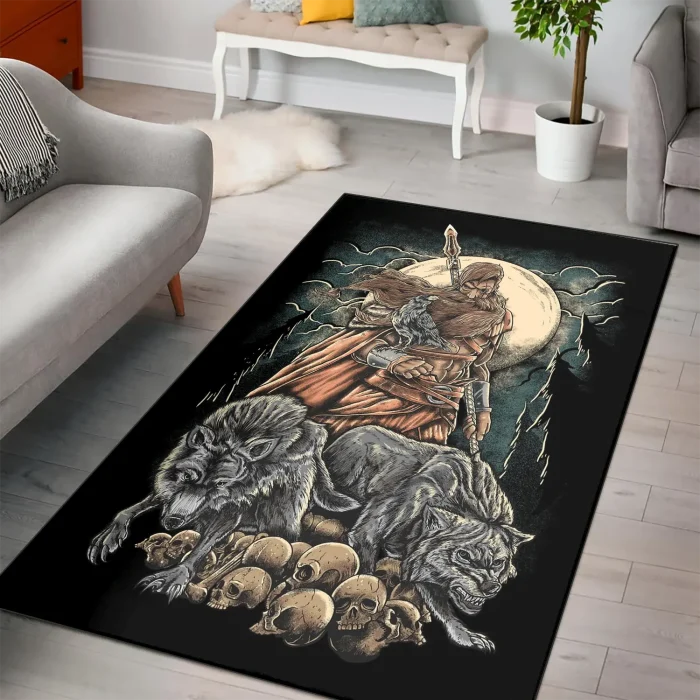Viking
Vikings – Muspelheim realm of fire
The more people learn about Norse mythology, the more interesting the stories become. The mythology itself has a wide variety of worlds, realms, characters, and iconic creatures and beings. Throughout the ages, every civilization had their strong beliefs placed into the creatures of the night and beings of light. Therefore, all the stories were equally balanced.
To this day, there’s no empirical evidence that all the Gods and giants from Norse mythology ever existed. These stories were spread throughout the centuries, and people carry them in their hearts and minds. The famous Norse mythology universe is no exception. This universe consisted of nine realms, and each one was home to different Norse beings.
All the realms were located on Yggdrasil, the incredible tree of life that held the entire universe together. The realms are known by their unique names that were chosen to depict them better. They’re known as Asgard, Niflheim, Muspelheim, Jotunheim, Midgard, Alfheim, Vanaheim, Helheim, and Svartalfheim. All of them together were what made the Norse mythology universe as we know it today.
THE REALM OF FIRE IN NORSE MYTHOLOGY
Every realm in Norse mythology cosmos houses specific deities and beings. Muspelheim or Muspell (Old Norse Múspellsheimr or Múspell) or better known as the realm of fire, is the home of fire giants. This world is depicted as the fiery, glowing, and the hot realm of sparks, fire, and lava and ash-spitting volcanos.
Realm of fire or Muspelheim was mentioned in stories about the creation and the destruction in Norse mythology. Prose Edda teaches us that even long before the creation of Midgard, one realm already existed – Niflheim. Within the realm of Niflheim, there was a well by the name of Hvergelmer.
The well had many rivers flowing further throughout the realm, and these rivers were known as Elivog (Old Norse Élivágar). Elivog consists of the rivers Svöl, Fimbulthul, Hrid, Ylgr, Leiptr, Gunnthrá, Fjörm, Slidr, Gjöll, Sylgr, and Víd. As time went by, the rivers spread far and wide from their source in Niflheim. The rivers carried venom within them, and eventually, the venom turned into ice.
You might be wondering what does ice have to do with the realm of fire? We’ll get to it.
After the ice was formed, it started to evaporate slowly, which created the rain, which then froze into rime. Eventually, accumulated ice started layering over the Ginnungagap (a primordial void). This event caused the northern segment of Ginnungagap to be thick with ice while the storms began to form within it.
However, glowing sparks from the realm of fire started to appear in the southern part of Ginnungagap. After the ice and heat from Muspelheim have met, the ice started to melt. The fiery sparks from Muspelheim are known as the ones that created the stars, the Moon, and the Sun, while the drops created Ymir, the first being.
Prose Edda explains that the power of heat helped spark the first life while the drops quickened its form and gave the being the looks of a man that’s known by the name Ymir. However, Ymir is known as an ancestor of frost giants, and they called him by another name – Aurgelmir.
THE SIGNIFICANCE OF FIRE GIANTS FROM MUSPELHEIM
Muspelheim, like all other realms, has its guardian. The fire giant guarding the fire realm is known as Surtr, which roughly translates as „Black“ or „Burnt.“
Surtr is a jotunn (Old Norse a Jötunn) or a giant that dwells in Muspelheim, and he had a significant part to play in the destruction of the entire Norse mythology cosmos. If you’re familiar with the prophecy about Ragnarök or the destruction of everything, you’ll realize that Surtr’s role was a significant one.
The additional information gathered from Prose Edda explained that Surtr led the „fire sons“ from Muspelheim to Asgard when Ragnarök began. He was the one who destroyed God Freyr and the realm of Gods. Muspelheim’s leader, Surtr, wasn’t powerful enough to fulfill Ragnarök by himself, but every jotunn had his part to play so that Surtr could accomplish his destiny.
It is said that when the doomsday comes, Fenrir, the wolf will break from his binds and kill all the Gods, including Allfather Odin himself. Fenrir’s sons, two young wolves by the names of Hati and Skoll, will catch the Moon and the Sun, and finally, devour them as well. Many other jotunns from other realms joined the destruction of the Norse cosmos. However, Surtr, as a fire giant from Muspelheim, was meant to wreak havoc to the realm of the Gods by destroying it with his fiery might and his long, bright and flaming sword.
MUSPELHEIM AND MODERN HELL
In modern Christianity, Hell is depicted as Devil’s home. An evil place filled with fire that serves the burn the sinners through eternity. The current description of Hell gives us reasons to believe that this place is filled with darkness, horrors, and fire while it’s reserved for the dead who sinned during their lifetime.
In Norse mythology, there were several realms that, combined, could resemble today’s Hell. Niflheim was the realm of ice, cold, and darkness. Helheim was reserved for the dead to spend the eternity within its locked gates, while Muspelheim was the realm of fire.
All these realms from Norse cosmos, if put together, could resemble something similar to what we know as Hell today. However, Muspelheim in Norse myths was known to be a place that no one dared to enter fearing the wrath of the powerful Surtr. Allfather Odin was the only one wise and strong enough to enter each realm freely, which includes Muspelheim, as well.
MUSPELHEIM IN MODERN CINEMATOGRAPHY
Marvel Studios launched another blockbuster movie titled „Thor: Ragnarok“ in which Thor, the main protagonist, was captured and chained by Surtr within its palace in Muspelheim. Surtr was presented as a jotunn made out of the burning fire with a ram’s skull, which was the source of his power.
After Thor managed to release himself from binds and while he fought Surtr’s legions of fire giants, he dueled Surtr himself. Cunningly, Thor managed to defeat the leader of fire jotunns and took the skull from his head, which extinguished Surtr’s power by locking it back into the ram’s skull.
Thor brought back the skull from Muspelheim to Asgard’s vaults for safekeeping because he knew Surtr was destined to destroy Asgard and bring the Ragnarok event into life. However, Goddess Hel came to Asgard to take the throne and to succumb all Asgardians into her rule. She knew that Muspelheim’s leader, Surtr, was locked in the Asgardian prison vaults, so she set him free so he could fulfill his destiny.
In the movie, Asgard was destroyed, the fiery jotunn Surtr from Muspelheim completed what he was meant to do, and the Norse universe was no more. However, there’s no evidence that Ragnarok ever happened in Norse mythology. But, on the other hand, there’s no substantial evidence that any of it ever really happened in the first place.
The movie doesn’t show much of the Muspelheim realm besides the Surtr’s palace in the beginning. Although the description of the Muspelheim realm in Prose Edda, as well as in various articles following this topic, is rather specific. Therefore, it’s not hard to imagine Muspelheim as a place that no one would ever want to visit willingly, except Odin or Thor.
MUSPELHEIM IN VIDEO GAMES
For all of you out there that enjoy playing video games, there’s the one game that you shouldn’t miss to try. If you’re into mythologies in general, and if you want to experience Muspelheim first hand, you’ll enjoy this game. The game was based on the elements of both Greek and Norse mythology.
The title of the game is GoW (God of War), and it became incredibly popular in the last decade or so. People that have played this game or that are still playing it can experience vast encounters of their main protagonist Kratos (Old Greek Cratus), with various creatures, Gods, and giants from both mythologies.
Norse mythology was not the base storyline of the game at the beginning. But, after several successful games, the game producers decided to bring Kratos into the nine realms of the Norse universe. That’s where all the fun has begun for the Norse mythology enthusiasts since they can see how Midgard, Muspelheim, and other realms of Norse mythology look like.
The adventure starts with Kratos and his son Atreus (later disclosed as Loki) in Midgard, but later on, it expands to other realms of Norse universe like Muspelheim. One of the most exceptional elements in the game is when the main character, Kratos, fights his way through the hordes of fire giants in Muspelheim and defeats thousands of enemies before reaching the specific trials. Finishing all of these trials successfully allows Kratos to proceed further in the game, and it opens new levels and gives more experience until the player reaches the final goal.
One of the trials in Muspelheim includes fighting against Valkyries, and many other recognizable creatures, giants, and Gods. The one God Kratos fought against was Baldur. Even though Baldur was invincible, Kratos managed to break the magic but decided to let Baldur go on with his life. However, Baldur taunted Kratos by killing Freya, so Kratos eventually killed God Baldur before he continued with his quest.
LET’S EXTINGUISH THE STORY ABOUT THE REALM OF FIRE
Considering that Muspelheim, as the realm of fire, is one of the most exciting realms in Norse universe, it’s no wonder that its leader is the one that’ll bring the end of everything. Would you visit Muspelheim if you had a chance? Even with mighty Thor carrying Mjölnir by your side, visiting the realm of fire would undoubtedly be an adventure to remember.
Which realms of Norse mythology you prefer the most, and which ones left a mark on you? Let us know your thoughts about Muspelheim and Surtr as well as everything you know about the fire giants. We encourage all of our readers to provide their knowledge with the community. That way, they can fill any gaps about Muspelheim in this article if there are any.
Source: Wikipedia

